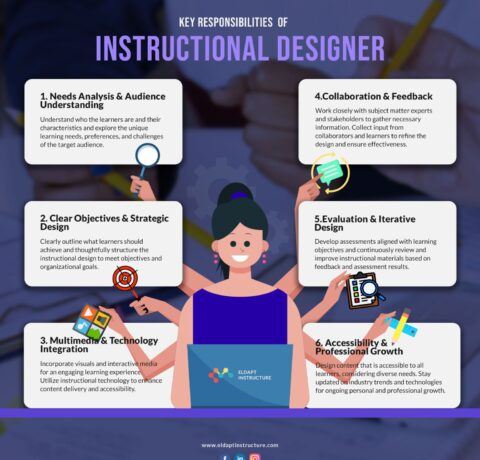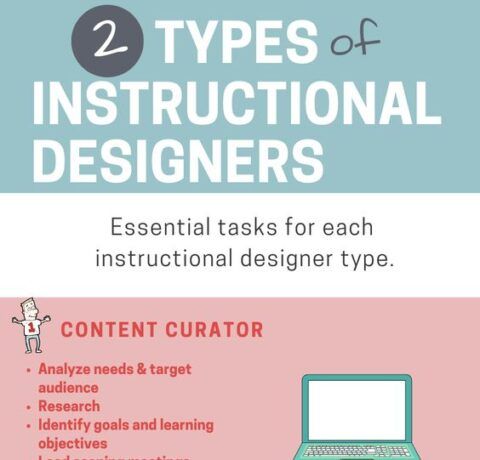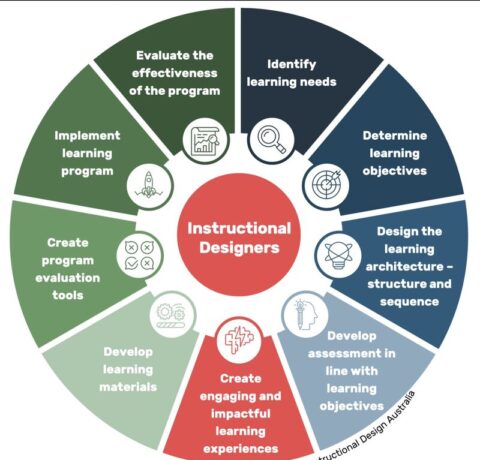The 5 Steps Of Instructional Design Thinking Infographic
With eLearning becoming pretty much the norm these days, when a new learning intervention is necessary, designers most often take a look at the material they already have and build on that.
Yet, there are instances when something completely new is required, and everything has to be thought of from scratch. In these cases, it’s good to know how the innovation process works and what techniques we can employ to get our brain to create new and different ideas. Here are five steps to Design Thinking based on Herbert Simon’s article from 1969:
1. Empathize
The first stage is to get an empathetic understanding of the problem you are trying to solve — in the case of Instructional Designers, the learning gap that needs to be filled.
This involves conducting a thorough training needs assessment, consulting team leaders, taking a look at a company’s short and long term goals and getting a good understanding of people’s previous experiences and present motivations.
Empathy is paramount to a human-centered design process such as Design Thinking, as it draws the designer away from his own assumptions and into the reality and needs of the beneficiary.
2. Define
This stage is about putting together all the previously gathered information. Analysis and synthesis are necessary for identifying and defining the main learning gaps. It’s ideal to formulate the conclusions in such a way as to be very clear and empathetic.
The Define stage is meant to help the designers put together a list of ideas to establish themes, techniques, and any other elements that will allow them to create optimal learning material and help employees and organizations reach their desired outcomes.
3. Ideate
During the third stage, designers should be all set for coming up with ideas. Having all this information, it is the time to become creative, think outside of the box and find the best innovative solutions.
There are many techniques for achieving this: there’s the good old-fashioned brainstorming, the more intricate SCAMPER or mind mapping just to name a few.
It is important to get as many ideas or angles as possible. Later, an elimination and prioritization process will help sieve what is really valuable.
4. Prototype
This is the time to produce a beta version of the modules. Since this is still an experimental phase, the point is to design the programs without spending a lot of time on the details. If possible, it’s best to produce several versions and involves several members of the team in evaluating them and giving feedback.
The various modules should be subject to examination and improvement based on user experience. It may be a frustrating phase with some amount of work getting tossed but it is necessary in order to ensure a very qualitative result.
5. Test
The fifth and final step is to launch the modules online and see if they are indeed a good solution for filling the learning gaps. The best way to test their efficiency is to choose a group of employees that represent the main audience, enroll them in the courses, collect feedback from participants, their colleagues, and team-leaders, and most importantly, allow for some time to see how the learning intervention gets translated into actual business results.
In conclusion
Even though in cartoons bright ideas are amusingly represented by a light bulb suddenly appearing on top of a character’s head, real innovation takes time and effort. Following this process will allow Instructional Designers to create valuable material that will make a difference in organizations.
Visit the MATRIX Blog for insightful posts on training and eLearning.







You can adjust your cookie preferences here.